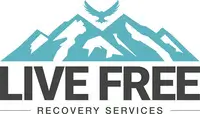Halfway House for Men in New Hampshire
Halfway houses can sometimes be referred to as sober living homes (SLHs).
Halfway houses, also known as Sober Living Homes (SLHs), provide housing and support for individuals with Substance Use Disorders (SUDs) who are transitioning out of drug or alcohol rehab. To give residents of halfway houses the best chance at success, these transitional housing establishments may be divided by gender; there can be a men’s halfway house and one specifically designed to serve women.
Aside from providing a safe and secure place to live, halfway houses also offer additional services such as:
- Sober companionship and peer support- The inpatient treatment option isn’t for everyone, and halfway houses provide an alternative setting where individuals can get the necessary support to stay sober.
- Job or educational assistance – At a halfway house, residents can access resources to help them find employment or enroll in school. The staff at the halfway house also provides assistance with counseling and job skills.
- Relapse prevention education – The staff at a halfway house can provide educational sessions on how to recognize and manage triggers that may lead to relapse, as well as other strategies for staying sober.
- Medical care – The staff at the halfway house can provide access to medical care, including medication-assisted treatment and other supportive services.
- Psychiatric care – The staff at a halfway house can provide access to psychiatric care, including medication and other treatments for mental health issues.
Here at Live Free Recovery in New Hampshire, we provide an extensive transition program to help men on their journey move from structured treatment back to independent living.
What is a Halfway House?
A halfway house, also known as a sober living facility, provides individuals in recovery from substance use disorders with a safe and secure place to live while transitioning back into society.
These supportive communities offer access to resources like healthcare, job search assistance, and vocational training. Halfway house also offers mental health counseling and alcohol addiction education, as well as providing a supportive community of peers who are in recovery from mental illness and substance abuse.
Certain halfway houses are specially designed to care for either men or women, hence the term “halfway.” By providing separate facilities—a men’s and a woman’s halfway house—these establishments offer a safe haven in which individuals can begin their journey toward long-term sobriety.

Typical Halfway House Rules
To encourage accountability and responsibility, halfway house rules are implemented to help individuals practice fundamental life skills like bill paying and housekeeping. On top of that, the regulations established also aim to promote sobriety and ensure safety for all occupants living in the home. Such guidelines may include:
- Abstinence is a must – All tenants staying at our facility are required to be completely sober. Random alcohol and drug testing may occur and if any positive result emerges, it will lead to the individual’s dismissal from residence.
- Substance-Free Property- This house is completely drug- and substance-free – no paraphernalia, substances, or any other related items are allowed.
- Curfew – Halfway houses are typically equipped with strict curfews to ensure order and safety.
- Employment- All tenants must maintain employment for the duration of their stay. For those without a job or who have recently lost one, house staff may expect them to pursue employment opportunities such as job training programs, scheduling interviews, and submitting applications.
- Conduct- Residents are expected to maintain a respectful, cooperative attitude towards house staff and other residents. Any sign of aggressive or disruptive behavior may result in disciplinary action up to and including expulsion from the property.
- Attendance at Meetings – It is highly recommended that residents attend house meetings. Additionally, many houses promote or necessitate the attendance of 12-step meetings for all inhabitants. Furthermore, it may be necessary to work with a sponsor as part of your recovery program if your recovery team recommends it.
Funding
The cost of a men’s halfway house heavily relies on the quantity and extent of services it provides, as well as its level of privacy. Government grants, typically distributed by state governments, partially fund these houses. Nonprofit or faith-based organizations tend to receive priority for these grants due to their commitment in serving communities in need.
Halfway house residents are responsible for supplying their own food and toiletries. However, if needed, staff can assist with applying for government funding such as the Supplemental Nutrition Assistance Program (SNAP), more commonly known as “food stamps”. Furthermore, to stay in the halfway house, a portion of each resident’s income must be allocated toward rent payments.
Living Arrangements
Living arrangements vary depending on the type of house. It might be like a dormitory with multiple beds in a single room or it might have smaller rooms that are shared with roommates.
Professional Staff
Most community-based halfway houses are staffed with a diverse range of experienced professionals that offer an array of services, including community-based counseling, drug addiction treatment, job placement assistance, and educational programs.
They can help residents manage their day-to-day tasks, and provide counseling services and advice on how to live a drug-free lifestyle. In addition, they also provide mental health services for those struggling with addiction and other mental health issues.
Length of Stay
The length of stay in a halfway house depends on the individual’s situation. Many correctional facilities require drug addicts to spend as little as two months up to two years in a halfway house before being released. This is usually done to ensure that those leaving correctional facilities have the necessary skills to cope with life outside the correctional facility and remain drug-free.

Sober Living Houses
A sober living house is a drug-free environment where those in recovery can live while they continue the process of sobriety. These housing programs often require participants to abstain from drugs and alcohol and participate in regular screenings to ensure that they are living a substance-free lifestyle.
While sober living houses are similar to halfway houses, they differ in several aspects, including:
Funding
Paying for a sober living home is typically the responsibility of the individual residing in it. However, insurance may cover your stay if you are affiliated with an outpatient treatment program.
Despite not being sponsored by the government, a person may still have access to funds for sober living houses through grants and scholarships from non-profit organizations. Residents usually pay out of pocket and are expected to be working while staying in an SLH.
Two Types of Sober Living Homes
There are two distinct types of sober living housing programs: those that are affiliated with a treatment center and those that are not.
Associated with a Treatment Facility
A Sober Living Home, owned by a treatment center as an aftercare option for those who have completed residential care and are transitioning to an intensive outpatient program (IOP), can provide the same model of care that you experienced in your residential facility. This is just one of many advantages that come with residing at a Sober Living Home affiliated with your former treatment center.
Not Affiliated with a Treatment Facility
These privately owned, for-profit homes provide a safe and supportive environment to anyone in recovery, regardless of their most recent form of treatment.
Typical Rules and Requirements
Abiding by the regulations of a sober living home is essential – similar to that of any halfway house, regardless if it’s for men or not. These rules involve:
- submitting to random drug and alcohol testing;
- abstaining from drugs and/or alcohol
- ensuring no narcotics are present on-site
- fulfilling assigned household chores and duties
- attending regular 12-step meetings, as well as meeting attendance expectations
At sober living homes, participation in an addiction treatment program is a must. These programs come in various forms such as 12-step groups, support groups, and on-site clinical counseling. Moreover, many residences also provide access to outside counselors for extra guidance if needed.
Living Arrangements
SLHs typically offer both private and shared rooms, allowing for more privacy than most other living arrangements. The number of residents can vary depending on the size of the house; however, it is usually less than 10 individuals. With independent business models in place, you have greater flexibility when choosing your room and roommates!
Professional Services
Not many sober living homes offer professional services on-site. Rather, the majority of their occupants will remain in the home while participating in a type of outpatient treatment program. If a particular facility is owned by an accompanying treatment center, they may hire personnel to oversee rule adherence and help transport residents to jobs or stores if needed. Nevertheless, these staff members are usually not clinicians themselves but simply monitors for safety reasons instead.
For independently owned homes, a house manager typically resides in the home and offers guidance or supervision if necessary. Furthermore, sober living staff may assist residents with finding services such as career training programs and educational opportunities.
Length of Stay
The duration of stay at a sober living house depends on the individual’s progress. If the sober living house is connected to the treatment facility, the resident may stay there until they are mentally and emotionally prepared, and able to resume life outside of clinical care.
Alternatively, some individuals may decide to extend their stay at the sober living home while they finish outpatient treatment and begin transitioning into a new life of sobriety. Some houses have set rules on how long one can stay there, nevertheless, houses not connected with any treatment center are likely to provide leases like that of a typical rental tenancy — monthly renewals along with 30 days notice prior to departure.
Do Sober Living Houses Work?
Do you think transitional living in rehab centers is an effective way to transition into sobriety?
Ultimately, the success of sober living homes relies on the individual’s commitment to recovery and maintaining a healthy lifestyle. It is not enough to simply move into a sobriety home. It is essential that individuals attend meetings, build meaningful connections with their support systems, and participate in activities that will help them stay motivated and focused. When individuals actively engage in these practices, sober living homes can be extremely effective at providing a safe and structured environment to continue the recovery process.
It is also important to remember that just like any other type of housing arrangement, individuals who reside in sober living homes must adhere to the rules and regulations set by the facility or operator. When individuals understand and abide by the transitional living rules, it can greatly increase their chances of successful recovery.

Generally, living in a sober home can drastically increase sobriety. In 2010, two facilities – A and B – were studied to determine the benefits of this practice on their participants. Program A reported an abstinence rate of 20% at the start, however, after completing the program six months later that number grew to 40%. On the other hand, those who entered Program B had a much lower starting point with only 11% abstinent from substance use initially, but by completion, it increased dramatically to 68%.
Moreover, abstinent rates remained fairly consistent over the 12- and 18-month points. The research demonstrated that people who achieved abstinence after departing from a Substance Abuse Home were likely to maintain their sobriety. Most prominently, active participation in a 12-step program was identified as the foremost predictor of positive outcomes.
Sober Living House vs Residential Treatment
For those struggling with substance abuse, both sober living homes and residential treatment programs offer an effective solution for addiction recovery. While both solutions necessitate residence in the facility, they take two distinct approaches to addiction recovery.
The main difference between sober living homes and residential treatment centers is the amount of structure. Residential treatment centers are typically more structured, offering individuals a greater amount of supervision and guidance as they tackle their addiction. Sober living homes, on the other hand, provide more freedom and autonomy while still ensuring a safe and supportive environment. On top of that, people can often stay longer at sober living houses than they would at traditional residential facilities – making them an even more effective option for many individuals struggling with addiction and providing extended support as they work toward sobriety!
Live Free Halfway House
If you’re looking for an alternative to residential addiction treatment, a man’s halfway house or sober living home like Live Free Recovery could be a perfect choice. These types of homes offer moderate structure and support to residents while they attend intensive outpatient program (IOP) treatments or other as-needed services. This is an excellent option if you need assistance managing your recovery journey in a low-intensity environment with plenty of resources on hand.
What Are the Benefits of Residing in a Gender-Specific Home?
Gender-specific homes offer a supportive, healing environment for men and women in recovery. Even though addiction affects people similarly, there are several gender-specific obstacles that men have to face when recovering from substance use disorder. That’s why it is preferable for them to live with other male peers who can understand and empathize with their struggles. This can create an atmosphere of safety, comfort, and enjoyment, ultimately leading to more successful treatment outcomes.
For example, in a men’s halfway house or sober living home, residents feel more at ease discussing delicate matters that they may not be comfortable sharing with women. Addiction can affect numerous parts of an individual’s life – which may include mental health struggles, physical abuse, and violence as well as other criminal activities. The initial stages of sobriety are often vulnerable periods for many people; so being able to speak openly without fear of judgment, in the company only of their own gender if preferred, is crucial for individuals’ recovery journeys.
A man’s halfway house can be invaluable for heterosexual men, as it eliminates the potential distractions of sex and dating that could impede their recovery in its early stages. Though same-gender houses may not completely eliminate these diversions for homosexual individuals, they do give young people the opportunity to reside with others who are more likely to comprehend what they’re facing during this time.
Drug Use in New Hampshire
Despite the limited success of efforts to stem drug abuse, many still wonder where such cases arise. A 2020 report sought to answer this question by evaluating and comparing illicit drub abuse usage in all fifty states plus Washington D.C., offering a detailed insight into differing rates across America. Results revealed that New Hampshire holds an eighteenth position when looking at overall levels of illegal drugs consumed – whereas Vermont topped lists for both teenage recreational users and adult frequent abusers alike, indicating some of the highest percentages nationwide!
The Opioid Crisis
Despite the fact that many states in New England are reporting an alarming amount of opioid-related deaths, it is NH that takes second place after West Virginia for the highest number of deaths due to opioids per capita. More alarmingly though, it takes the top spot on a much more dangerous list: fentanyl-related overdoses.
Fentanyl is a powerful synthetic opioid that can be up to 100 times stronger than heroin. Its presence on the streets has been linked to this recent spike in overdose incidents. In fact, statistics from 2015 show that nearly two-thirds of drug-related deaths were attributed to fentanyl abuse alone – though many instances still involve heroin use too.
With this in mind, Live Free Recovery in New Hampshire has made it a priority to tackle the issue head-on. Through their comprehensive treatment program, they provide personalized care to help individuals suffering from opioid addiction find the path to sobriety.

Men’s Halfway House at Live Free Recovery
If you are looking for a comprehensive recovery facility designed specifically for men, Live Free Recovery’s Mens Halfway House is the perfect fit.
At Live Free Recovery, the men’s halfway house is at the core of our recovery program. Located in Manchester, NH, this house offers a modern and comfortable atmosphere that allows individuals to feel secure as they take strides toward sobriety. Beautifully furnished and surrounded by a calming atmosphere, it’s here where men can find peace and comfort as they embark on their journey toward sobriety.
We offer more than just sober living homes – we also have residential and two outpatient programs tailored to your recovery needs. Our caring, professional medical staff will provide medication-assisted treatment if it is necessary for you. Moreover, our family addiction counseling program is designed to help mend broken relationships with loved ones so that you can comfortably transition back into life at home again. Our staff at Live Free are highly trained in addiction recovery and provide continual assistance to our participants as they strive to recover from their substance abuse issues.
Do you think a halfway house is the right treatment option for you or do you know someone who could benefit from the supportive environment of a halfway house? Contact us today to learn more about our men’s halfway house and how it can help you or someone you know in their journey to recovery!
Did this article answer your questions?
"*" indicates required fields
Take the First Step Towards a Brighter Tomorrow
At Live Free Recovery, we’re committed to walking alongside you on every step of your journey. Our compassionate team is here to provide the guidance and support you need to overcome addiction and reclaim your life. Don’t wait—reach out today to speak with someone who truly understands your struggles and can help you take that important first step toward healing and a fresh start.
Your path to recovery starts here.
